Why Does My Dog Suddenly Like His Crate? 7 Legit Reasons
Ideally, once you bring a dog home, you want him to have his own space, a home within a home if you will. Not only does that free you up from having to cater to his whims the whole day, it also gives him a safe space for napping and spending some time in solitude.
However, training a dog to accept the crate as his own den can be hard work that requires plenty of patience. In fact, you may even end up having some sleepless nights.
This is why it comes as such a shock to parents when their dog starts unexpectedly gravitating towards his crate and actually prefers staying in rather than flying around the house. Leading them to question: Why does my dog suddenly like his crate?
Well, let us start by telling you you’re not alone! Many dog parents go through this. The most overtly positive reason could be that all your crate training is finally paying off, and your dog has accepted the crate as his den. However, if we were to think about it realistically, it’s quite possible that your dog is either sick, annoyed by a change, or afraid.
Obviously, this simple explanation doesn’t cover the entire story. For that, you’ll have to read on, as we cover, in detail, some of the most logical reasons why your dog is suddenly infatuated with his crate.
Table of Contents
Reasons why your dog may suddenly like his crate
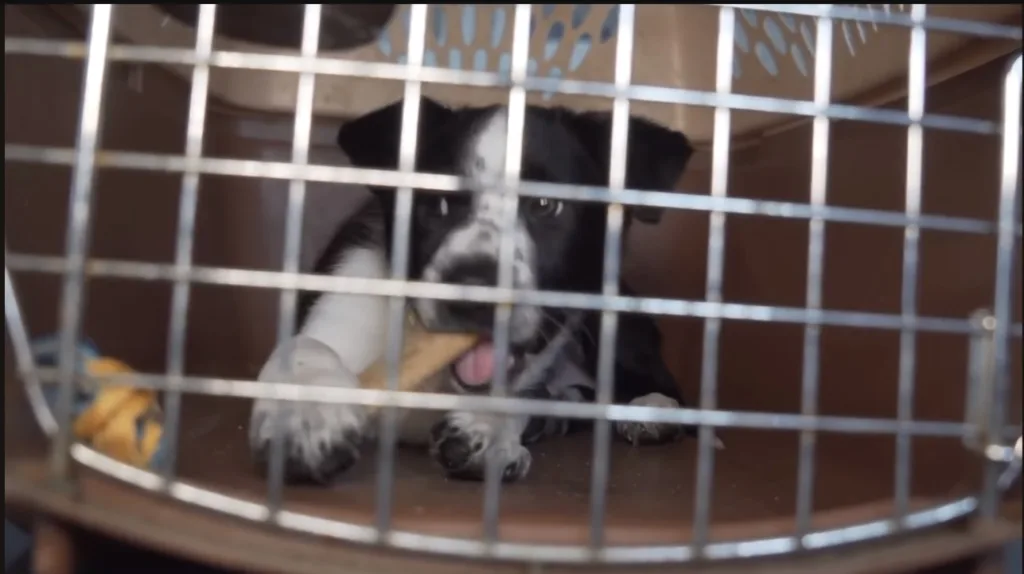
As much as you might enjoy having some time to yourself while your pup peacefully enjoys the confines of his crate, after a certain point the irritation will start to set in. Which may leave you pondering: Why does my dog prefer being in her crate and not out with the family?
From our own experience as dog owners, there could be 7 potential reasons as to why your dog has suddenly started spending more time in his crate than with you.
You’re Crating Your Dog Too Much
As new dog parents, we’re all still in the learning stage when it comes to dealing with our pups. Now, we all know that crates can help in disciplining a dog, and especially potty training him.
However, at the end of the day, we do have to realize that a crate, as homely as we can make it, is still a “cage” with bars and a door on it. Yes, it’s necessary, but at the same time, you can’t just lock your dog in there for huge amounts of time in order to teach him discipline or restraint.
Leaving him in there for anywhere close to 8 hours makes it a prison, not a home. When you do that, one of two things can happen: either he flies out of there as soon as you open the door, or he dejectedly stays put and resignedly accepts the crate as his home.
Sadly, the latter option is worse, and it can cause your dog to develop some unintended physical, psychological, and emotional side effects as well. Just think of how you would feel being trapped in a small space without having the freedom to run around.
Therefore, if you are going to crate your dog for potty training purposes or to just give him a safe space to play in while you’re not home, make sure you don’t leave him in there for more than 6 hours a day.
He’s Afraid
The most likely reason for your dog staying in his crate even when you call for him could be because of fear. Dogs are extremely sensitive to loud noises, shouting, and overall abusive behavior.
Are you sure you’re using positive reinforcement while training your dog? For example, do you, at times, snap at him when he urinates on your pristine hardwood floors? Do you berate him (or worse, hit him) when he scratches up your couch?
Are you using the crate as a form of punishment rather than a safe space? Because if your dog refuses to come out of his crate or wants to run back in there every chance he gets, it could be because of his fear of facing threats or abuse.
Now, it’s entirely possible that him feeling afraid of abuse could have nothing to do with you. We’ve often seen that dogs that come from abusive homes feel comfortable living in a crate where humans can’t reach them.
So, it’s quite possible that your dog has a history of abuse. Thus, it’s your job to ensure that you create positive associations with the crate so he views it as a home where he can bark and get out whenever he wants.
Alternatively, if you’re absolutely sure that your dog hasn’t been abused a day in his life, then his reaction of wanting to stay in his crate could be because of some other factor, like the loud noise of thunder, traffic, or even plate stacking.
To determine the exact reason, you’ll have to keenly observe your dog when he’s around loud noises to get a feel for what’s scaring him.
A New Change is Stressing Your Dog Out
You may or may not have noticed your puppy turning defensive whenever he’s in the presence of guests who come over to your home. Some dogs respond to guests showing up by sticking close to their parents even more.
Others deal with this stress by confining themselves in their crates for long periods of time to limit their interactions. While this may actually be a relief for parents, the first few times guests show up, if your dog stays in there for longer than 5 to 6 hours, it’s not exactly healthy.
Even still, guests will eventually leave, and life will go back to normal, so that shouldn’t concern you too much. Besides, this reaction to guests showing up is normal in dogs, and they do, in time, get over it.
But this does open up the possibility that if your dog wants to keep going in his crate, it could be because of a recent change. Whether that change is good or bad is irrelevant to him, and he may simply need some time to adjust to the new reality.
So it is on you to figure out which change is annoying him. Have you made any changes to his environment (knowingly or unknowingly)? Have you lost a family member recently (a human or an animal)? Have you relocated to a new home?
Or have you added a new member to your family (a baby or another pet for your dog to play with)? These are all questions you should be asking. But, when it comes down to it, the safest and simplest solution might just be to let things play out and let him adjust on his own.
Your Dog is Unwell or Injured
While it should be obvious, most new dog parents aren’t able to detect when their pup is in pain or is unwell. This isn’t a knock at you, as we were kind of the same way during our first go around.
But our purpose for telling you this is that one telltale sign that your dog is unwell or injured is when he wants to spend huge amounts of time locked in his crate. When dogs are sick or injured, they just want to spend some time alone (kind of like humans).
To that end, they try to find a quiet space where they won’t be bothered to nurse their injuries and their health. Now, the sickness or injury itself could be minor or even life-threatening, but they’ll still treat it the same way.
So, if you do start seeing your dog suddenly wandering back into his crate more and more, you should try to entice him to come out by showing him his favorite treat.
Dogs usually have incredibly large appetites and are almost always up for a treat. If he’s avoiding or ignoring a treat, then he could very well be sick or injured.
Taking him to the vet as quickly as possible then becomes your best option. Remember, acting fast when your dog is injured or sick can save his life!
Your Dog is Expecting a Treat
If you’ve combed through the entire list up to this point and are convinced that your dog isn’t showing any signs of being afraid, annoyed, or sick, then it’s entirely possible that your dog just wants a treat.
One of the key strategies dog owners employ during crate training is rewarding their pup with a treat as soon as they enter the crate. It’s a foolproof strategy that definitely works.
However, an undue side effect of that strategy could be your dog becoming conditioned to get rewards whenever he sets foot in his crate. Just think about why dogs like crates, and you’ll realize that if your dog has become used to getting treats when he’s in the crate, it’s only natural that he’ll go back into his crate whenever he wants more.
So, in reality, he hasn’t suddenly become fond of his crate, he’s become fond of the treats he receives while he’s in there. One obvious workaround for this behavior is for you to start feeding him treats during the time he spends out of the crate as well.
Yes, you need to limit the number of treats he receives per day, but don’t just give him all of them the moment he gets in the crate. Otherwise, you could end up developing a very bad habit in him that may become difficult to get rid of.
He’s Depressed or Sad
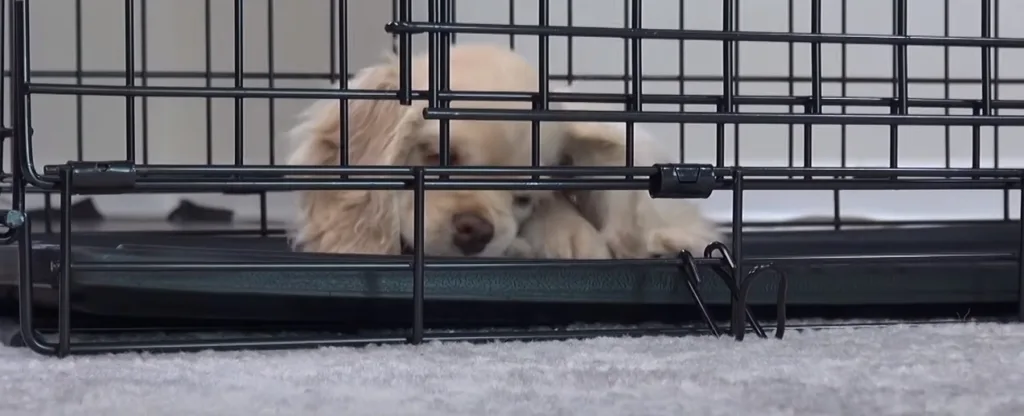
It’s very important for you to consider your dog as a sentient being capable of experiencing human emotions of happiness and even sadness or depression.
Once you accept that, you’ll eventually realize that sometimes your dog’s depression or sadness may be the root cause behind him wanting to spend more time in his crate.
Some textbook signs of depression and sadness in dogs include:
- Showing you the sad eyes (generally referred to as the puppy dog eyes)
- Dropping ears
- Little to no interest in treats and food in general
- Hiding or withdrawing in a solitary corner of the house or his crate
- Paw licking
Now, you can never be sure if your dog is actually sad or if he’s sick or injured, so make sure you take him to the vet at least once to rule out any medical issues.
Once you’ve done that, the brainstorming can begin. You need to figure out what’s troubling your little one because even in a great home, dogs can go through spells of depression or sadness.
It could be because of the arrival of a new pet and your dog feeling like you aren’t paying enough attention to him. Or it could also be because you just recently adopted him from another loving family, and he just misses them.
In cases like this, all you can do is be patient and wait for him to fall in love with you or his new furry friend.
Your Crate Training is Paying Off
Maybe, just maybe, your crate training is actually beginning to pay off? Crate training can sometimes be a long and arduous process. Every dog adjusts to his crate differently and takes his own time to get there.
However, if you’ve been patient and persistent enough, then you could consider your dog getting into his crate willingly as a success. But, all things considered, that’s still a big if, which is partly why we placed this reason at the end of the list.
Thus, you must first rule out all of the other reasons on this list before patting yourself on the back. However, if everything checks out and your crate training has paid off, then all of us here tip our doggy hat to you!
But why now? And why so suddenly? Well, we’d like for you to think of it as a problem you just figured out the answer to. Can you imagine that feeling? It’s almost like a reflex, like an “I got it” moment.
That’s exactly what it’s like for your pup when they “get” that the crate is a space that they can make their home.
Signs That Can Help You Differentiate Between Your Dog’s Different Moods
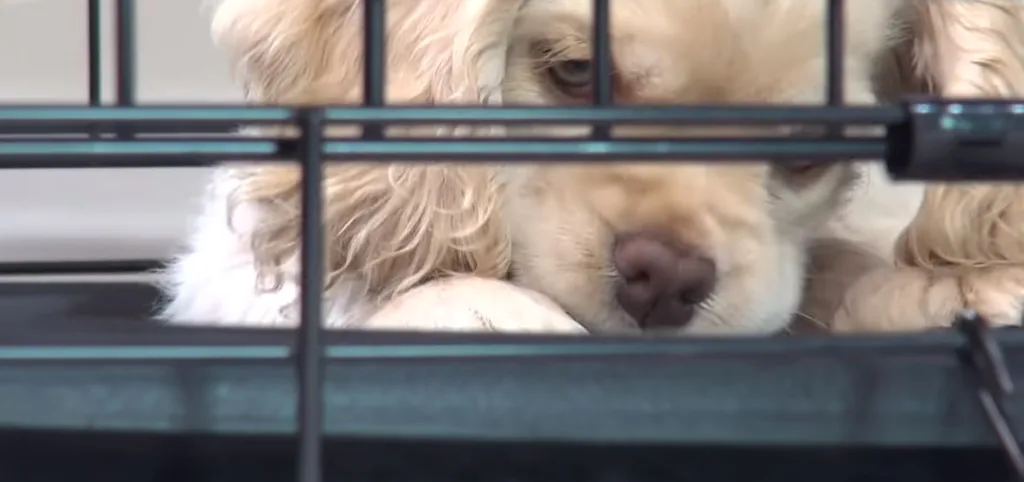
During crate training, it’s important for you to observe your dog’s body language as a way of ensuring that he’s actually happy in the crate.
An owner who’s in tune with their pet’s body language can easily detect and diagnose any inconsistencies in their pet’s behavior, especially when their dog suddenly starts liking his crate.
Here are some of the different body language clues dogs display depending on the mood they’re in:
Happy
- Relaxed eyelids and gaze
- Slightly open and relaxed mouth
- Tail upright and wagging (left to right)
- Sleeping on their back with their paws up (leaving their vital organs exposed completely)
Sad or Stressed
- Shivering and shaking (even when it’s not cold)
- Barking excessively
- Whining
- Pacing
- Excessively drooling
- Licking their lips, even when there isn’t any food around
- Sleeping in a curled-up position (protecting their vital organs from attack)
Afraid
- Ears completely flattened
- Licking their lips, even when there’s no food around
- Lowered or stiff tail carefully placed between their legs
- Staying in a crouched-down position for long periods of time
FAQs
Is It Bad If My Dog Suddenly Wants To Stay In His Crate?
While it doesn’t necessarily have to be bad, you should still check up on your dog to ensure he isn’t displaying any odd behaviors.
If he does display some odd behaviors, a trip to the vet might not be the worst idea, but try to diagnose the problem yourself using the information in the list.
On the other hand, if everything checks out, then it’s probably a result of your training, in which case you should reward yourself with a nap or a long bath.
However, don’t take this as an incentive to stop the training, as you’ll want to ensure that this isn’t just a phase and that it continues for a long time.
Why Is My Dog Suddenly Sleeping In Her Crate?
If your dog has suddenly started sleeping in her crate, then chances are that her crate is the only place she deems comfortable enough to sleep in.
However, this could be something to look into if she decided to move into her crate rather than sleep in her usual location in the house. A change like this can be brought about by guests, children, or other pets, creating a ruckus around the house.
Dogs enjoy their privacy at times, and the fact that she’s chosen to go sleep in her crate could be because there’s a lot of commotion in the house.
You might also want to check her for any illnesses or injuries because dogs often look for solitude when they aren’t feeling well.
Why Does My Dog Stay In His Crate All Day?
If you’ve given your dog ample space to run and play around, and he still chooses to stay in his crate, then that might be something to worry about. That is if he has only started exhibiting this kind of behavior suddenly and it isn’t part of his daily routine.
Because many pups actually enjoy staying inside their crate even when the door is open once they start viewing it as a safe space. If you believe him acting like that is unusual, you’d do well to take him to a vet and get a diagnosis on what the problem is.
Why Does My Dog Not Want To Leave Her Cage?
The most likely reason why your dog doesn’t want to leave her cage is because she’s seen something scary or stressful outside, and she thinks she’s safe inside. Your best course of action, in this case, is to encourage your pup to leave the crate through positive reinforcement.
Perhaps show her a treat or try to play a game, which will get her to come out. In the process, you can even show her that there isn’t anything to be afraid of.
Should I Force My Dog Out Of Her Crate?
Absolutely not. Forcing your dog out of her crate or forcing her to do anything she doesn’t want can shatter her confidence and instill fear in her.
You’d be much better off gently coaxing her out using a chew toy, treat or by exciting her with play time. Reward her as she steps out of the crate, and she’ll love you for it.
Positive Reinforcement: The Key to Proper Crate Training
As we sign off, we hope our answer to your question, why does my dog suddenly like his crate were satisfactory.
More than that, we hope you’ve learned that positive reinforcement is the only way to properly train your dog to love his crate and treat it as a home.
If your pup does start suddenly spending more time in his crate, then it falls on you to get to the bottom of what could be scaring, annoying, or distressing him.
However, you must never force him to get out of his crate, as that could destroy all the effort you’ve put into his training. A gentle touch will prove effective eventually, and your dog will be forevermore grateful for it.
For more guidance and information on the best dog training practices, check out some of our other posts. Have a great day!
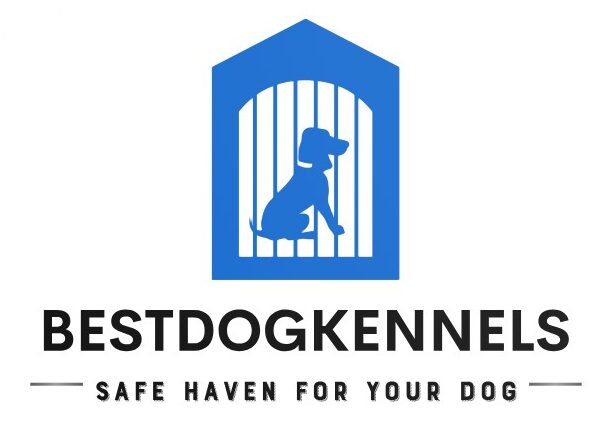
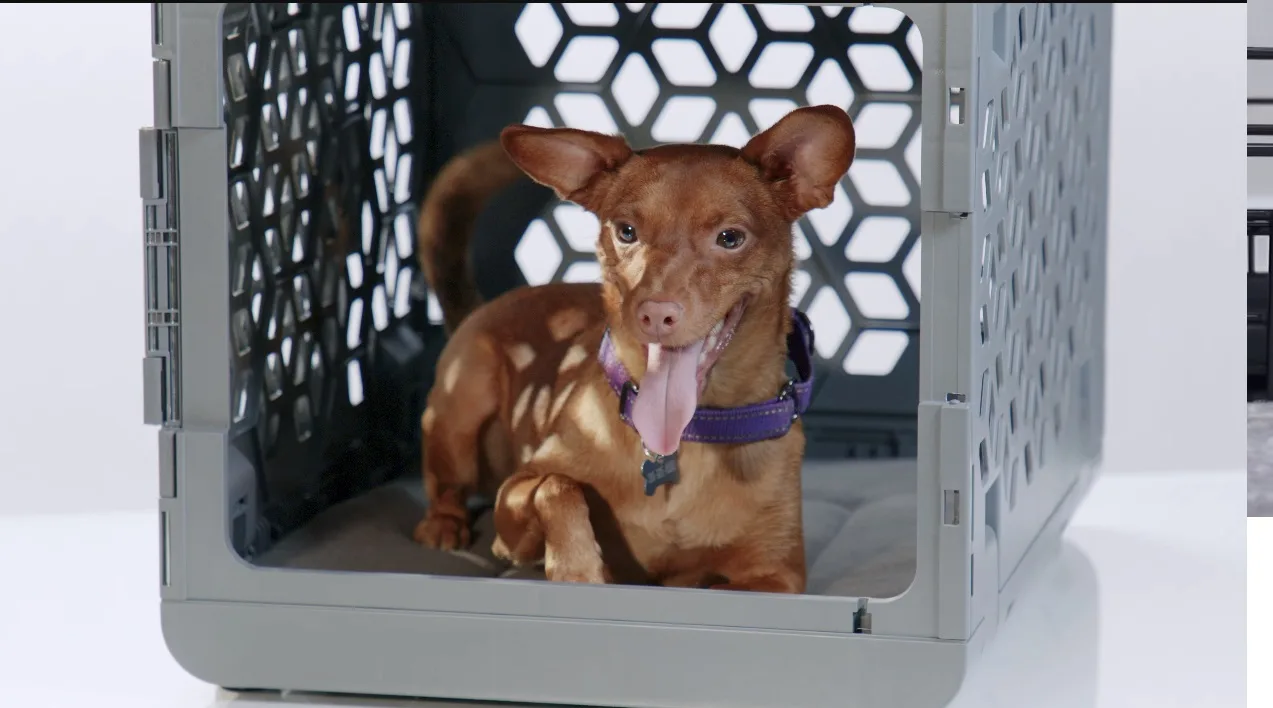
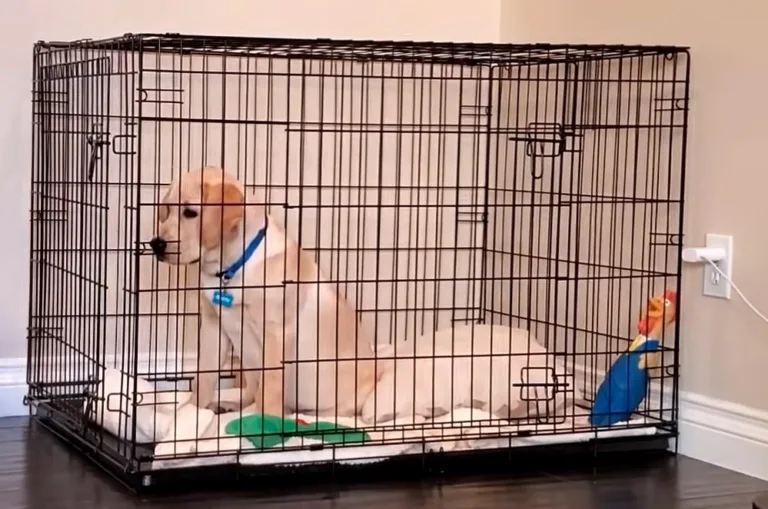
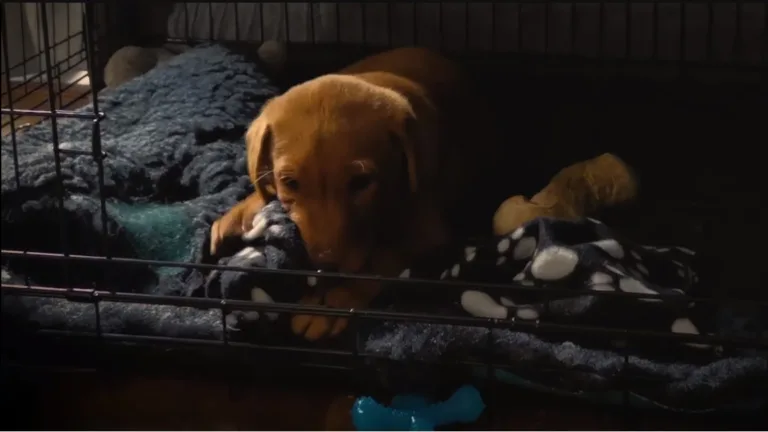



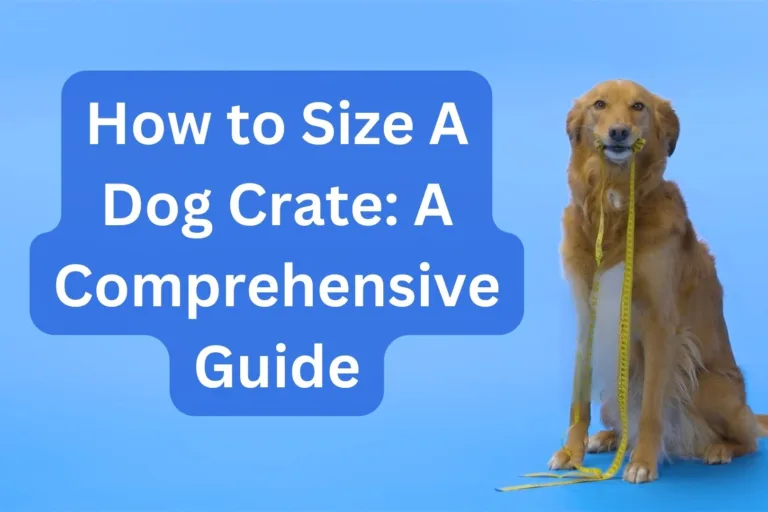
One Comment